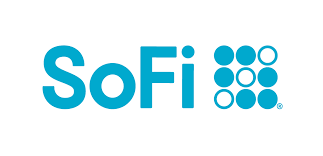6 Unexpected Ways to Save on Medication Costs
KEY POINTS
- The list price is not necessarily what you'll have to pay for a prescription.
- Your first best step is to speak with your doctor and pharmacist and ask them to help you find a less expensive alternative.
- Discount drug companies, like Cost Plus, are in the business of driving down drug costs.
According to a GoodRx survey, over one-third of Americans have trouble affording their prescription medications. When people can't afford their prescriptions, difficult decisions are made, including whether to follow medical advice or take them as directed. If you wonder where you'll come up with the funds to pay for medications, these tips may help.
1. Check out Mark Cuban's prescription drug company
Businessman Mark Cuban's Cost Plus Drug Company is perfectly named. Here's how it works: Cost Plus purchases the drug from the manufacturer at cost, adds a 15% markup so the company can stay in business, and then adds $5 to pay the pharmacies that prepare and provide the prescriptions. For example:
- Cost Plus pays a base price of $20
- Cost Plus then adds 15% to the base price ($3)
- Finally, Cost Plus adds $5 to pay the pharmacy that fills your prescription
Final cost: $28
One example of how much a person can save is featured on the Cost Plus site. It's for the generic version of Prozac, called fluoxetine. Fluoxetine typically costs $22.94, but even after adding 15% and a pharmacy fee of $5, Drug Plus sells it for $6.20.
2. Split pills
We are not suggesting that you take half the recommended dose of any medication. What we're suggesting is that you speak with your doctor to find out if they will prescribe twice the required dose. For example, if you're prescribed a 20 mg tablet, ask if the doctor will write the prescription for 40 mg instead. That way, you can cut the tablets in half, continue taking the prescribed dose, and make the prescription last twice as long.
3. Get to know discount programs
Even if you have money in a traditional IRA for retirement and your medical coverage is halfway decent, it's possible that you don't always have the funds in your checking account to cover the medication you need. Discount programs are designed to give you a break on the price of medications you use (or should be using), even if your insurance can't help.
Check out RxAssist for help here. NeedyMeds is another option -- both allow you to type in the name of the medication you need. Once you've provided that information, both sites will show you where the best prices are to be found, which discount programs are available, and what steps you need to take to land a lower price.
4. Medicare Part D
If you're 65 or older, consider signing up for Medicare Part D (supplemental drug coverage). You'll pay a monthly premium to add Medicare Part D to your existing Medicare plan. Still, it could be much less expensive than the out-of-pocket cost of your medication without Part D.
5. Ask about generics
Despite the number of people who seem to believe that brand-name drugs are superior, generics are exactly the same medication. The reason brand-name drugs cost more is two-fold:
- The amount of money that went into researching and creating the drug.
- The fact that drug companies know their formulation is the "only game in town" until a generic is made.
Ask your pharmacist about how much you could save by switching.
6. Find out about switching to another brand
Let's say you're on cholesterol medication, but the price is about to wipe your checking account clean. Cholesterol medications have been around for a while now, and there's likely a generic that would work just as well. However, if there's no generic available, find out if there's another less-expensive brand that's just as good as the medication you've been taking. Ask your doctor.
There is currently little we can do to control the high cost of prescription medications. However, we do have some tools at our disposal to help manage those costs.
Our Research Expert
We're firm believers in the Golden Rule, which is why editorial opinions are ours alone and have not been previously reviewed, approved, or endorsed by included advertisers. Motley Fool Money does not cover all offers on the market. Motley Fool Money is 100% owned and operated by The Motley Fool. Our knowledgeable team of personal finance editors and analysts are employed by The Motley Fool and held to the same set of publishing standards and editorial integrity while maintaining professional separation from the analysts and editors on other Motley Fool brands. Terms may apply to offers listed on this page.



